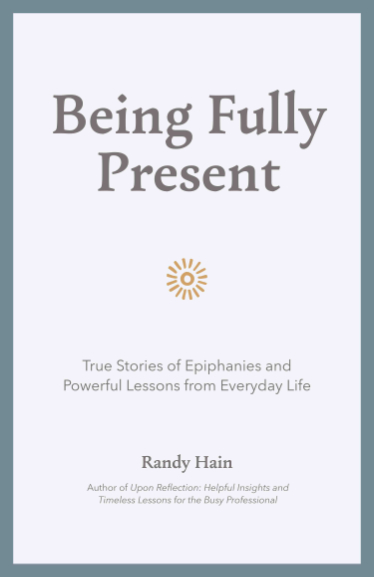 No matter the Bible study, somehow, someway, someone will eventually throw out those dreaded purgatory questions: “Who believes in purgatory?” “What is the teaching regarding it?” “What is it like?” “How do you get out?” “When did it come into existence?” “What are some Scriptural references to it?” And, above all, “What exactly is it?” (Just to name a few!) Purgatory is one of the most misunderstood teachings of the Church, yet when you understand it, it is one of the most comforting.
No matter the Bible study, somehow, someway, someone will eventually throw out those dreaded purgatory questions: “Who believes in purgatory?” “What is the teaching regarding it?” “What is it like?” “How do you get out?” “When did it come into existence?” “What are some Scriptural references to it?” And, above all, “What exactly is it?” (Just to name a few!) Purgatory is one of the most misunderstood teachings of the Church, yet when you understand it, it is one of the most comforting.
Purgatory refers to a temporary state of purification for those who have died in the state of grace but still need to get rid of any lingering imperfections (venial sins, earthly attachments, self-will) before entering the perfection of heaven (CCC1030-1032). It is an application of the graces merited for us by Jesus on the cross, so that we might be made pure before entering heaven, and can be thought of as the final stage of sanctification (i.e., the process by which we become holy.) This stage of sanctification is an immersion into the love of Christ, which removes the residue of imperfection, cleansing us from the stain of sin. In the simplest analogy, it’s like showering and donning our best attire before we meet the King.
The Church has never defined the exact nature of purgatory in reference to space and time; such as, what kind of “place” it is or “how long it lasts”. For space and time are merely human images used in an attempt to describe the mystery of eternal life.
The Church does clearly teach that purgatory is the final purification of the elect and is entirely different from the punishment of the damned (CCC 1030). Sadly, many of our Protestant brothers and sisters, and many Catholics as well, misunderstand this teaching, and believe purgatory to be a place of punishment rather than a state of purification. This misunderstanding is rooted in the middle ages when the notion of fire as a symbol of purification became associated with punishment after death. Through exaggerated preaching and artwork, the image of purgatory became that of a minor version of hell, the only difference being that purgatory is temporary. This misguided image of purgatory as a painful fire burning punishment spread in the Western Church and unfortunately continues to smolder in the minds of many today. In contrast to this image of old, today’s theologians consider purgatory as a positive process and believe that the pain associated with the process of purification isn’t a torturous pain, but rather the pain felt as “the person ‘burns’ with remorse because he or she is separated from God who is infinite goodness and joy. This separation, though temporary, is the result of a person’s own actions on earth.” (This Is Our Faith, Michael Francis Pennock, Ave Maria Press, 1989)
According to the Catholic Encyclopedia, the Catholic doctrine of purgatory supposes the fact that some die with smaller faults for which there was no true repentance, and also the fact that the temporal penalty due to sin is in times not wholly paid in this life. The proofs for the Catholic position, both in Scripture and in Tradition, are bound up also with the practice of praying for the dead. For why pray for the dead, if there be no belief in the power of prayer to afford solace to those who as yet are excluded from the sight of God?
The Church formulated her doctrine of faith on Purgatory at the Councils of Florence (1439) and Trent (1563). Yet, before the Decrees of Florence and Trent, this doctrine -that many who have died are still in a place of purification and that prayers avail to help the dead- is seen in the very earliest Christian tradition. Tertullian “De corona militis” mentions prayers for the dead as an Apostolic ordinance, and in “De Monogamia” (cap. x, P. L., II, col. 912) he advises a widow “to pray for the soul of her husband, begging repose for him and participation in the first resurrection”.
The Apostolic practice of praying for the dead continued on from Tertullian (c 211) through the teachings of Hippolytus (c235), Orgien (c254) and other Church Fathers and passed into the liturgy of the Church. This is as evident in the fourth century as it is in the twentieth. St. Cyril of Jerusalem (Catechet. Mystog., V, 9, P.G., XXXIII, col. 1116) describing the liturgy, writes: “Then we pray for the Holy Fathers and Bishops that are dead; and in short for all those who have departed this life in our communion; believing that the souls of those for whom prayers are offered receive very great relief, while this holy and tremendous victim lies upon the altar.”
Today the Church holds to those practices and teaches that the prayers offered in atonement for the dead, above all in the Eucharistic Sacrifice, can “help” those “in” purgatory attain the beatific vision of God (CCC 1032).
The doctrine of purgatory was held by pre-Christian Jews, post-Christian Jews, Catholics, and Eastern Orthodox. It was not denied until the Protestant Reformation, and thus only Protestants deny it today.
Proofs in Scripture for the doctrine of purgatory are: 2 Macc 12:46, Matt 5:25-26, Matt12:32, 1 Cor 3:15, 2 Tim 1:16-18, 1Peter 3:18-20, 1 John 5:16-17 and Rev 21:27 (Nothing unclean will be allowed to enter heaven.)
Once we understand what purgatory is, then we can understand the comfort the knowledge of its existence brings. For purgatory is the ultimate “Bride’s Room”. It is the place set aside for me to prepare to meet my Bridegroom. My whole entire life I have prepared my mind and spirit for this day, why wouldn’t I want everything to be perfect? I can’t imagine standing before betrothed in the church and exchanging vows un-showered and in my t-shirt and jeans. Why would I think I could stand before the ultimate Bridegroom and not be cleansed and donned in my best. What a comfort to know that before I go to the wedding banquet of the Lamb (Rev. 19:9), I will undergo the eternal “What Not To Wear”, and I will be purified. I will stand before the beatific vision of God and eternally bask in the ever-flowing well-spring of happiness, peace, and mutual communion. Now that’s something worth cleaning up for!














